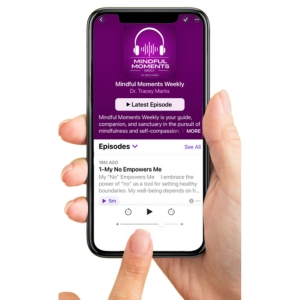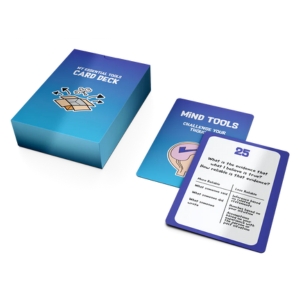Have you ever noticed how some days feel effortless and manageable from the moment you wake up, while others feel like you’re playing catch-up from the second your feet hit the floor? The difference often isn’t what happens during your day—it’s what happens in that crucial first hour after you wake up.
As a psychiatrist who specializes in helping people build mental resilience, I’ve seen firsthand how morning routines can transform not just your day, but your overall mental health. But this isn’t about forcing yourself to wake up at 5 AM or following some influencer’s perfect morning ritual. Instead, I want to share five science-backed methods that work with your brain’s natural processes to unlock your best mental state, regardless of how much time you have or what your schedule looks like.
What’s Really Happening in Your Brain When You Wake Up
Your brain doesn’t wake up all at once. Different systems come online at different times, and there’s a specific biological process happening that either sets you up for success or struggle.
Within the first thirty to sixty minutes of waking, your body experiences what’s called the cortisol awakening response. Before you think “cortisol is bad,” let me clarify—this morning cortisol spike is actually healthy and necessary. Think of it as your brain’s natural alarm system gently bringing you from sleep to alertness. This cortisol rise gives you energy, sharpens your focus, and prepares your body for the day ahead.
The key is that this response happens whether you’re intentional about it or not. But how you handle this window determines whether that cortisol works for you or against you.
If you immediately grab your phone and start scrolling through emails or social media, you’re essentially hijacking this natural awakening process. Instead of a gentle, controlled activation, you’re throwing your nervous system into reactive mode. Your brain goes from peaceful rest to high alert in seconds, and that sets a stressed, reactive tone for your entire day.
But here’s the fascinating part—your morning routine can actually program your stress response system. During that first hour, your brain is essentially asking, “What kind of day are we having? Are we safe and in control, or are we in crisis mode?” The activities you choose send a clear signal, and your brain adjusts accordingly.
The 5 Science-Backed Morning Methods
Method 1: Strategic Light Exposure
The Science: Within thirty to sixty minutes of waking up, your brain is looking for bright light as a signal that it’s truly daytime. When your eyes detect this light, it triggers a cascade of neurochemical changes that regulate your mood and energy throughout the day.
Light exposure stimulates the production of serotonin, which helps stabilize your mood and supports feelings of well-being. It also helps regulate your circadian rhythm, which affects when you’ll naturally feel alert during the day and when you’ll feel ready for sleep at night.
How to Apply It:
- Step outside for 10-15 minutes (even on cloudy days, natural outdoor light is significantly brighter than indoor lighting)
- If you can’t get outside, sit near a large window
- Consider a light therapy device designed for seasonal depression
- The key is consistency—your brain learns to expect this light cue
Method 2: Movement Activation
The Science: Gentle morning movement increases blood flow to your prefrontal cortex—the part of your brain responsible for decision-making, emotional regulation, and focus. When you move your body in the morning, you’re literally awakening your brain’s executive functions.
Movement also releases a small amount of endorphins and other mood-supporting chemicals, creating a natural sense of well-being. You’re sending a signal to your nervous system that you’re awake, alert, and ready to engage with the day.
How to Apply It:
- 5 minutes of stretching by your bed
- A short walk around the block
- Gentle yoga poses
- Basic bodyweight exercises like squats or push-ups
- The goal isn’t to exhaust yourself—it’s to activate your circulatory system
Method 3: Breathing Reset
The Science: Controlled breathing directly influences your autonomic nervous system. While that natural cortisol rise is healthy, you want to make sure it doesn’t tip into chronic stress activation. When you take slow, deliberate breaths—especially with a longer exhale than inhale—you activate your parasympathetic nervous system.
This creates what researchers call “calm alertness.” You’re awake and focused, but not anxious or reactive.
How to Apply It:
- Breathe in for 4 counts
- Hold for 4 counts
- Exhale for 6 counts
- Hold for 2 counts
- Repeat for 2-3 minutes
- That longer exhale activates the vagus nerve, your body’s main relaxation pathway
Method 4: Intention Setting
The Science: When you consciously choose a focus or priority for your day, you’re activating the brain networks responsible for goal-directed behavior. This helps reduce decision fatigue because your brain already has a framework for making choices throughout the day.
When you set an intention, you’re programming your reticular activating system—the part of your brain that filters information and notices what’s relevant.
How to Apply It:
- Choose one primary intention (not a detailed to-do list)
- Examples: focusing on what you can control, approaching challenges with curiosity, responding thoughtfully rather than reacting impulsively
- Takes less than a minute but shifts your brain from reactive mode to intentional mode
Method 5: Protein Intake
The Science: Your neurotransmitters—the chemicals that regulate mood, focus, and motivation—are made from amino acids, which come from protein. When you include protein in your morning routine, you’re giving your brain the raw materials it needs to produce stable levels of these important chemicals.
Protein also supports the production of dopamine, which affects your motivation and ability to focus on tasks. Without adequate protein, your blood sugar can fluctuate, directly affecting your mood and cognitive performance.
How to Apply It:
- Include any protein source: eggs, Greek yogurt, protein smoothie, nuts, or even leftovers
- The key is including some protein rather than starting with only carbohydrates or caffeine
- Prevents energy crashes and supports sustained mental performance
Making It Work for Your Life
You don’t need to implement all five methods at once, and you don’t need a lot of time. Even if you only have ten minutes, you can combine several methods:
- Step outside with your coffee or tea (light exposure + protein)
- Add some gentle stretching while outside (movement)
- Take a few intentional breaths and set a simple intention (breathing + intention setting)
The goal isn’t perfection—it’s consistency. Your brain responds to patterns, so even small, regular practices can create significant changes in your baseline mental state over time.
The Ripple Effect
What you’re really doing with these practices is working with your brain’s natural biology instead of against it. You’re supporting the healthy cortisol awakening response, optimizing your circadian rhythms, and engaging your prefrontal cortex in a positive way. This creates a foundation of calm alertness and emotional stability that carries through your entire day.
When you start your day feeling grounded and intentional, you make better decisions throughout the day. You’re less reactive to stress, more focused on your priorities, and better able to regulate your emotions when challenges arise.
Remember, morning routines are only half the equation. Just as important as how you start your day is how you end it. Evening wind-down routines are equally crucial for processing the day’s stress and preparing your brain for restorative sleep.
Start with one or two methods that feel most doable for your current routine, and build from there. Your future self will thank you for taking these small but powerful steps toward better mental health and resilience.




